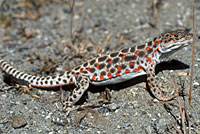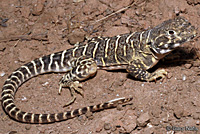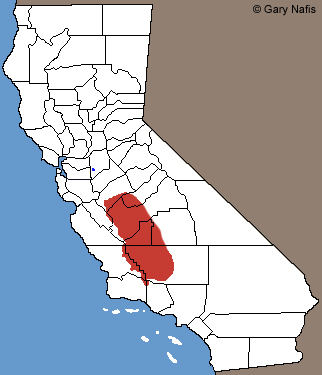Leopard Lizards in California


| Leopard lizards are medium to large, diurnal lizards, with large dark spots on a light backgraound. In the dark phase, they will appear dark with white bars. Breeding females show red bars and spots on the body and tail. Leopard lizards inhabit open desert or semi-arid habitats in the deserts and the lower Central Valley. They are usually observed walking on the ground, but sometimes they will be observed basking on low rocks or bushes. They do not climb rocks as readily as the similar Collared lizards. Three species of Leopard Lizards are found in California, with very little overlap in range. All are similar in appearance. Check the range maps below to determine which species is in your area. |
||
| Long-nosed Leopard Lizard - Gambelia wislizenii | ||
Found primarily in the Mojave and Sonoran and part of the Great Basin deserts. |
||
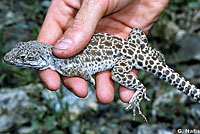 |
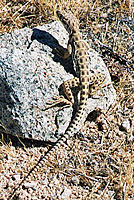 |
|
| Female with red breeding coloring |
||
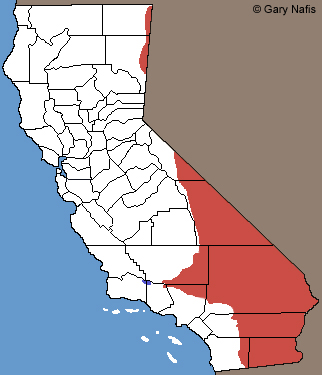 |
||
| California distribution of Gambelia wislizenii - Long-nosed Leopard Lizard |
||
| Blunt-nosed Leopard Lizard - Gambelia sila | ||
Found in the Central Valley and open, dry, valley grassland habitat in the foothills and plains. As the name indicates, the nose is not as long as that of the Long-nosed Leopard Lizard. |
||
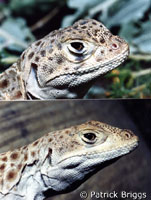 |
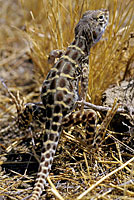 |
|
| Nose comparisons Top Blunt-nosed Leopard Lizard - Gambelia sila Bottom Long-nosed Leopard Lizard - Gambelia wislizenii ) © Patrick Briggs |
||
| Distribution of Gambelia sila - Blunt-nosed Leopard Lizard |
||
| Cope's Leopard Lizard - Gambelia copei |
||
Rarely observed in California. Found only in a small region just north of the Baja California border in San Diego County. |
||
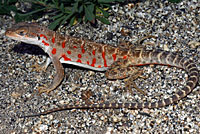 |
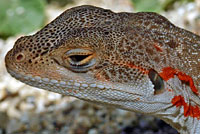 |
 |
| Female showing breeding colors. | ||
 |
||
| California distribution of Gambelia copei - Cope's Leopard Lizard |
||
Return to the Top
© 2000 -

